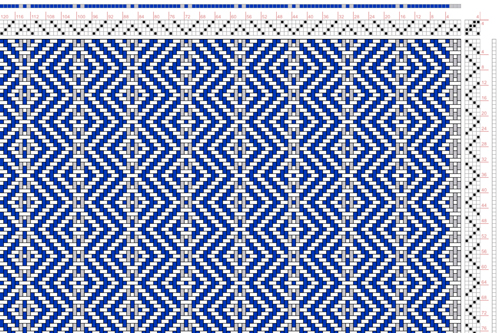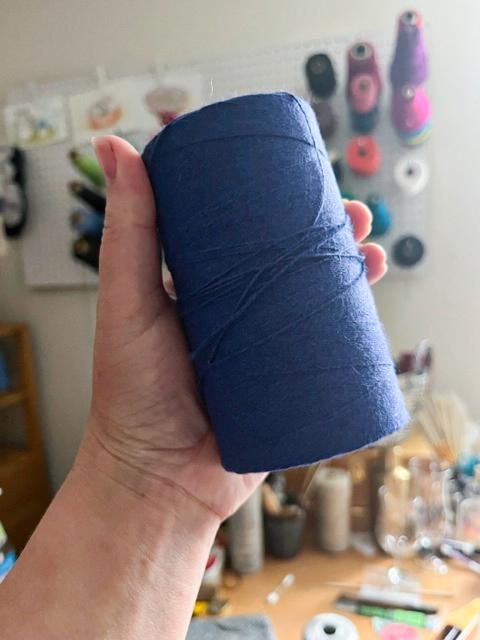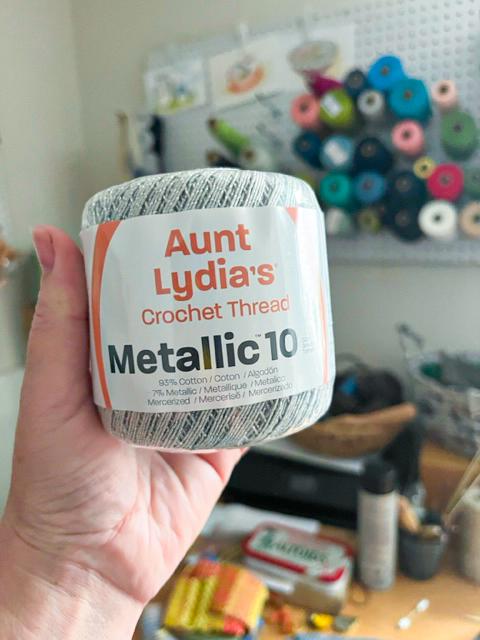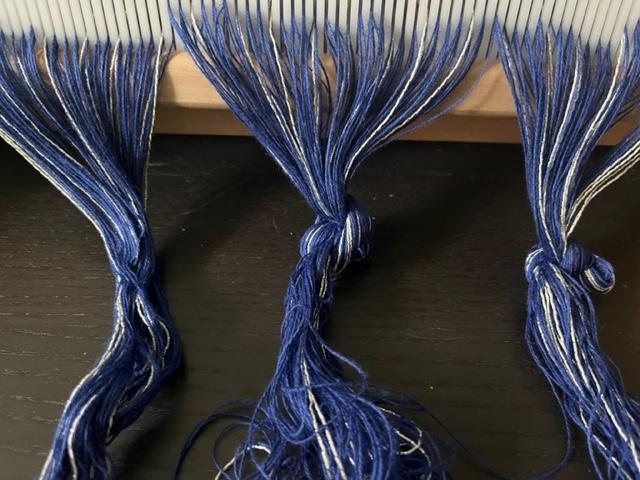Sometimes, the best ideas come at the last minute. Deciding that Janet, Carly, and Dawn would join everyone in the “Weaving for the Winter Holidays” weave-along was one of those brilliant, last-minute inspirations. We would weave along and take the weaving classes with you!
Janet was fully stocked and ready, while Dawn designed the draft for Carly to weave on the rigid heddle. We’d then proceed and make any necessary color and material changes. Because of our experience teaching The Handweaving Academy’s weaving classes, we have the tools to make it work!
First, Dawn will talk about her process of creating the draft:
I chose the Hanukkah towels on four shafts since Carly’s working on her rigid heddle and I don’t have any particular attachment to the winter holidays – I just like blue and white and silver! I headed over to the Colors in The Draft Editor to see where I could make it sparkle. I used Replace Colors to make the blue in the warp white and the white highlights silver instead. I found the yellow/gold too assertive for my taste, so I replaced those warp and weft stripes with silver, too. I also created a whole bunch of single, silver accent stripes in the weft before I realized I was making much more work for Carly, so out they went. I then used The Draft Editor to delete a bunch of warp threads so we’d fit on Carly’s warp. Then we figured out if it would work on the rigid heddle and what supplies we needed.
The full design is too large to show the entire draft clearly, but here is the corner of the final design:

Here, Carly discusses her process:
After looking over the draft, I assessed that I could use 8/2 cotton or Cottoline and thread this particular draft at 25 epi for a nice, tightly woven twill towel. Luckily, I had the perfect Maurice Brassard Royal Blue in Cottolin (thank goodness for a well-stocked stash!), so we were off to a pretty good start.

The issue: adding silver. This was a major element of Dawn’s design, but I didn’t have any metallic threads in my collection.
First, we brainstormed some possible solutions:
We checked weaving yarn companies, but the popular silver yarns were out of stock, and shipping was either too slow or too expensive, so that option was off the table.
I have some 10/2 mercerized grey yarn that could add a bit of shine, but the threads are thinner than 8/2 and might not give the final towel the right amount of “zing.”
Dawn considered overnighting something from Amazon, but we couldn’t be sure if the yarn would work for the warp.
I offered to check my local big-box craft store to see if they had anything. I thought I could get some spools of metallic sewing thread to run alongside the mercerized 10/2. While the thread would be polyester and cause some differential shrinkage, Janet suggested pulling any loose silver threads to the hemlines after wet finishing.
We all agreed that using silver sewing thread was the best solution, but as I wandered into the crochet aisle, I found this:

Metallic crochet cotton! A quick internet search showed it’s just slightly thicker than my 8/2 (3,050 yards per pound vs. 3,360 yards per pound), but they can be woven at similar setts. With 93% cotton, it should work well with my cottolin. The three strands of tightly twisted mercerized thread make it almost certainly suitable for warp.

So there we have it! The warp is on (thanks for watching last Sunday!), and we are ready to thread Dawn’s beautiful design.
Sometimes, I see weavers hesitate to use yarns not specifically meant for weaving. But at the end of the day, yarn is yarn. By understanding fiber content and knowing how to calculate yarn substitutions—using tools like the Ashenhurst Calculator—you’ll become a more confident weaver, ready to think outside the box.
We’re excited to see our Winter Weave Along Participants on our next Live at Loom on October 27th; we’ll be streaming life from our YouTube Channel at 2:00 PST.


Want to learn more about color and weaving? Check out Tien’s latest blog on why colors clash.
